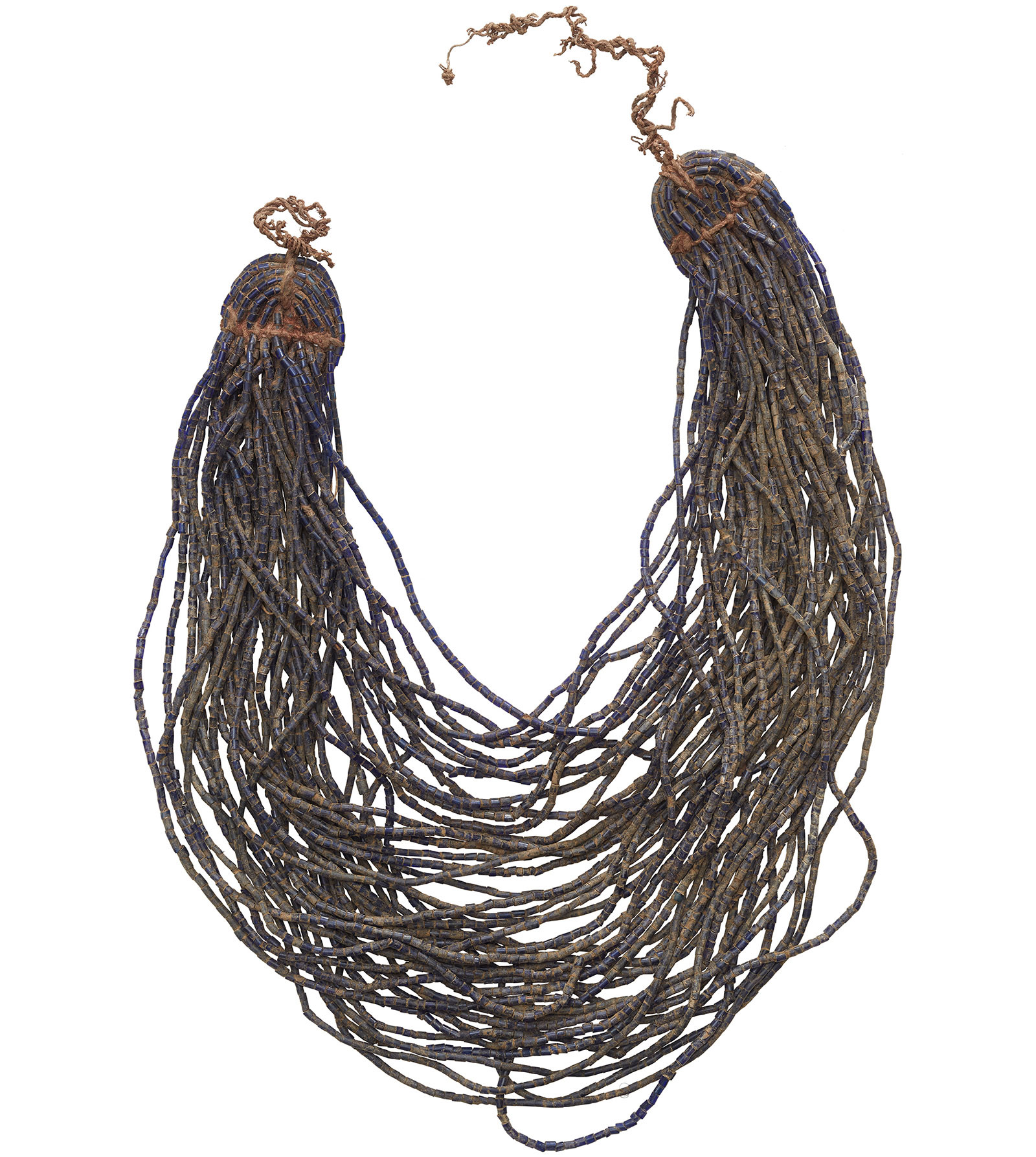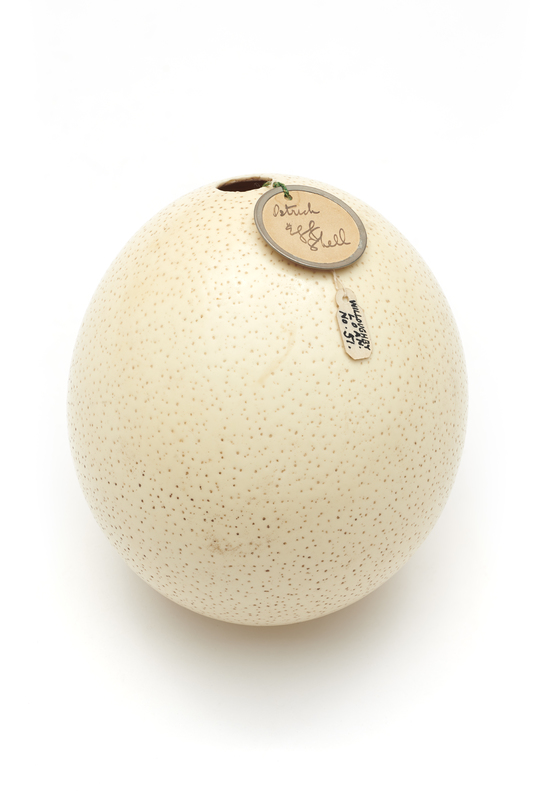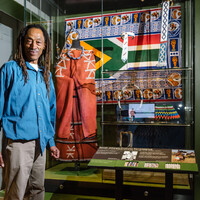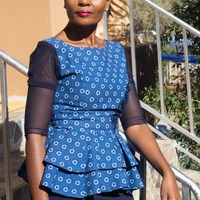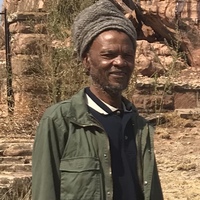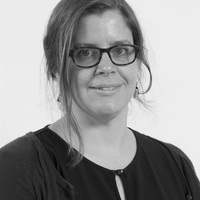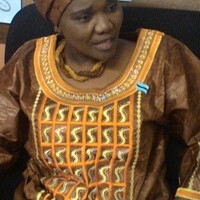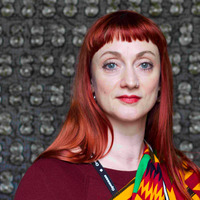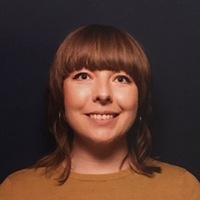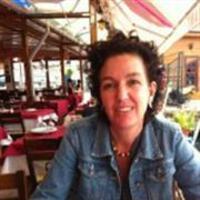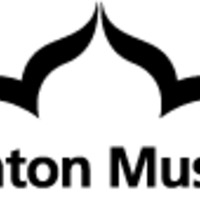Ostrich egg shell; Water container; Sekgapha sa lee la ntshe
Item
Title
Ostrich egg shell; Water container; Sekgapha sa lee la ntshe
Creator
Unrecorded
Subject
Aves
Description
Physical Description: Whole undecorated Ostrich egg shell. There is a small circular hole in the top where shell has been removed. This was probably used as a water carrier, with the hole sealed with a stopper. [Royal Pavilion & Museums, 2019]
Contextual Description: Edible contents of egg would be removed through a small hole made in the top of the egg. The egg shell would then be used as a container for water, sealed with a stopper. [Tshepo Skwambane, 2019-07-04]
Historic Label: Struthio Camelus Ostrich
Accession Register Entry: Three EGGS of OSTRICH. Bechuanaland. [Herbert Samuel Toms, 1936-03]
Contextual Description: People who own and use these are San we don't know if it was also used among the Tswana. [Nicola Stylianou's summary of the discussion of this object from a recorded interview with Scobie Lekhutile and Gase Kediseng (Khama Memeorial Museum) and Winani Thebele (Botswana National Museum), 2019]
Contextual Description: 02:18:00 He’s attaching the usage of this ostrich eggshell as a liquid or water container amongst Basarwa. He said they would even bury them in different spots so that when you are out in the veldt hunting or collecting or whatever and you’re thirsty, you know where you have stored some water. RHH: Does he remember that he has seen people drinking or using these?
SL: He hasn’t seen it with his eyes but as a young man he would go work other parts of Botswana and he has met some San fellow workers who would relate that story to him like this is how we manage. Transcription by KL of MAC_BB_20190817_RPM3 SL Interview with Tshupo Ntono, Village Elder, Language: Setswana with English translations by SL, 2019
SL: He hasn’t seen it with his eyes but as a young man he would go work other parts of Botswana and he has met some San fellow workers who would relate that story to him like this is how we manage. Transcription by KL of MAC_BB_20190817_RPM3 SL Interview with Tshupo Ntono, Village Elder, Language: Setswana with English translations by SL, 2019
Contextual Description: SL 1:11:25
Ostrich eggshell
JM 1:11:33
What do you think it was used for?
SL 1:11:35
storage of liquid
SL 1:13:20
sekgapha sa lee la ntshe - spell that please
WT 1:13:27
you don't just want to say lee la ntshe?
SL 1:13:32
Lee is a is an egg with the white and the yolk and everything. And this is just a shell that's why I gave it sekgapha. Because it's hollowed. It has nothing. I can't even think of making any omelette with it. But once you say lee, my brain thinks of omelette, thinks of food. It's like an egg complete.
SL 1:14:48
Today the only people that we know of to be using ostrich eggshells as their container of liquids are the san people. But I don't know if it was common amongst all the Bantu people in this region too 'cause we didn't have glass bottles and plastic bottles then this...
The above notes are from a transcription by Kathleen Lawther of a discussion between Gase Kediseng, JoAnn McGregor, Nicola Stylianou, Scobie Lekhuthile and Winani Thebele which took place at the Khama III Memorial Museum on the 5th of August 2019. To listen to the full recording please follow the link below.
Ostrich eggshell
JM 1:11:33
What do you think it was used for?
SL 1:11:35
storage of liquid
SL 1:13:20
sekgapha sa lee la ntshe - spell that please
WT 1:13:27
you don't just want to say lee la ntshe?
SL 1:13:32
Lee is a is an egg with the white and the yolk and everything. And this is just a shell that's why I gave it sekgapha. Because it's hollowed. It has nothing. I can't even think of making any omelette with it. But once you say lee, my brain thinks of omelette, thinks of food. It's like an egg complete.
SL 1:14:48
Today the only people that we know of to be using ostrich eggshells as their container of liquids are the san people. But I don't know if it was common amongst all the Bantu people in this region too 'cause we didn't have glass bottles and plastic bottles then this...
The above notes are from a transcription by Kathleen Lawther of a discussion between Gase Kediseng, JoAnn McGregor, Nicola Stylianou, Scobie Lekhuthile and Winani Thebele which took place at the Khama III Memorial Museum on the 5th of August 2019. To listen to the full recording please follow the link below.
Publisher
Making African Connections
Date
Pre 1899
Type
PhysicalObject
Format
Whole: 160 mm x 120 mm
Ostrich eggshell
Identifier
BC425476
Source
Collected by Reverend William Charles Willoughby, a Christian missionary, in what was then the Bechuanaland Protectorate (1885-1966). It is now the Republic of Botswana, having gained independence from Britain in 1966.
From 1889-92 Willoughby was pastor at Union Street Church, Brighton (now The Font pub). From 1893 to 1898 he worked for the London Missionary Society in Bechuanaland. He assembled this collection of objects during this period. This was a period of social and technological changes and these objects represent traditional lifestyles and skills, rather than the contemporary lives of the people Willoughby met.
Willoughby's collection was loaned to Brighton Museum in 1899 when he returned to the UK. The loan was converted into a donation in 1936, and accessioned as acquisition R4007.
Some objects were re-numbered with the WA (World Art) numbering system in the 2000s. These numbers have been reverted to the original R4007/... numbers where possible for consistency in 2019.
From 1889-92 Willoughby was pastor at Union Street Church, Brighton (now The Font pub). From 1893 to 1898 he worked for the London Missionary Society in Bechuanaland. He assembled this collection of objects during this period. This was a period of social and technological changes and these objects represent traditional lifestyles and skills, rather than the contemporary lives of the people Willoughby met.
Willoughby's collection was loaned to Brighton Museum in 1899 when he returned to the UK. The loan was converted into a donation in 1936, and accessioned as acquisition R4007.
Some objects were re-numbered with the WA (World Art) numbering system in the 2000s. These numbers have been reverted to the original R4007/... numbers where possible for consistency in 2019.
William Charles Willoughby
Botswana, Southern Africa, Africa
1893-1898
Space/Place
Botswana, Southern Africa, Africa
Rights
Creative Commons Attribution-ShareAlike 4.0 International

